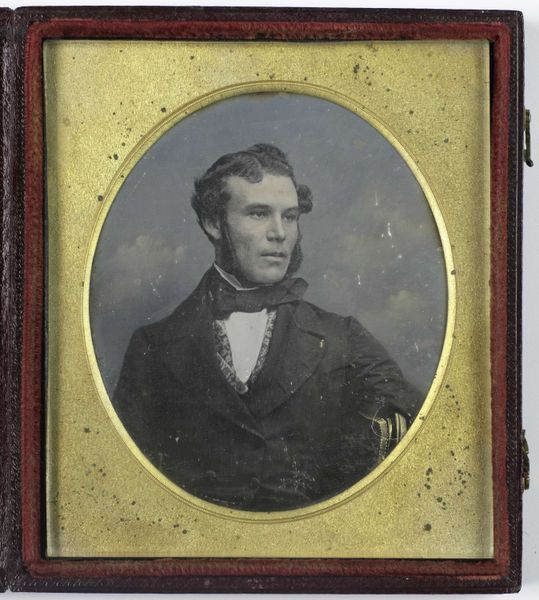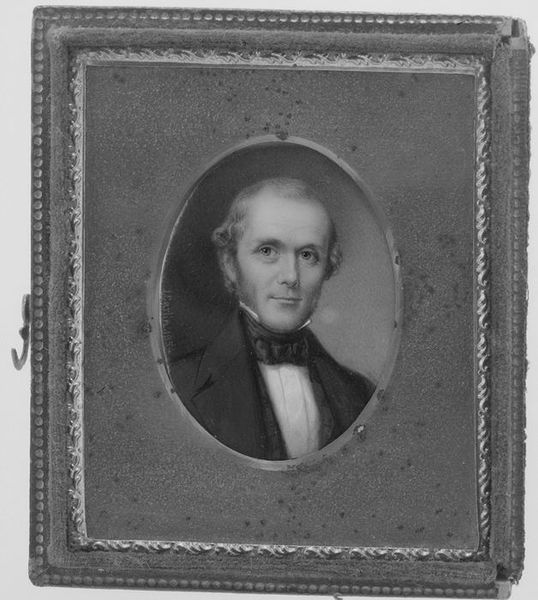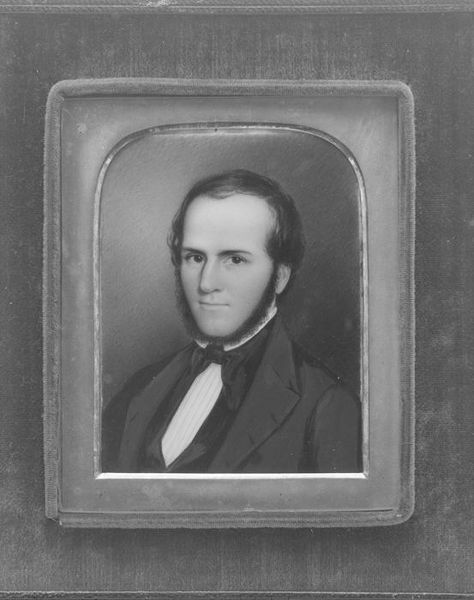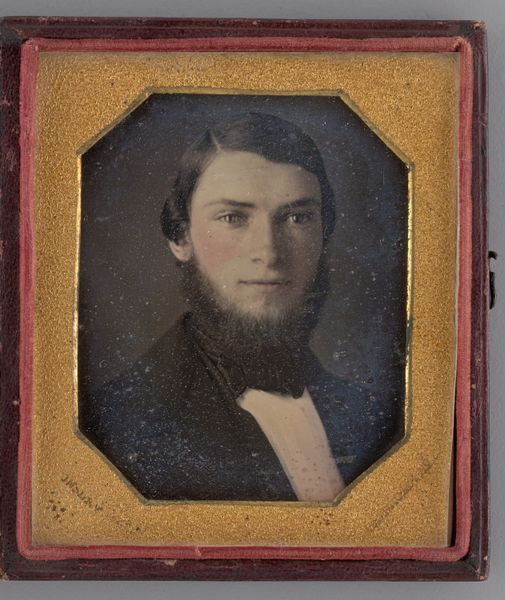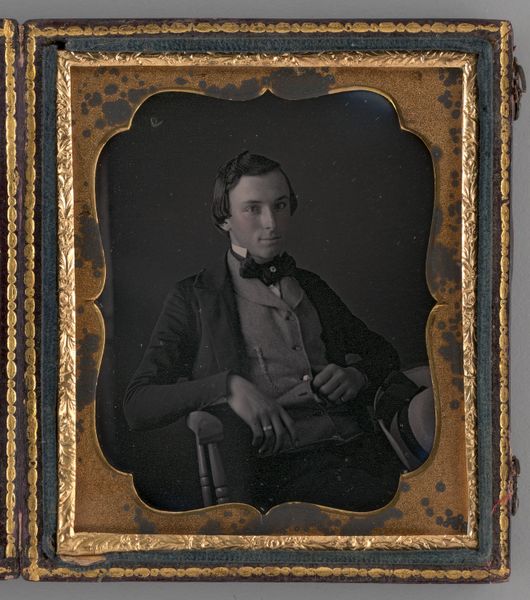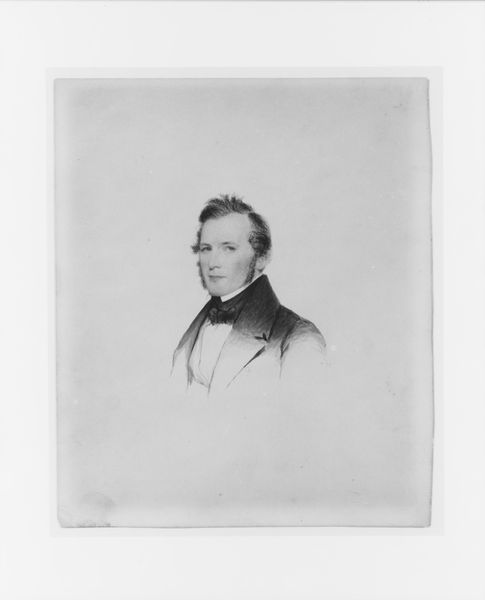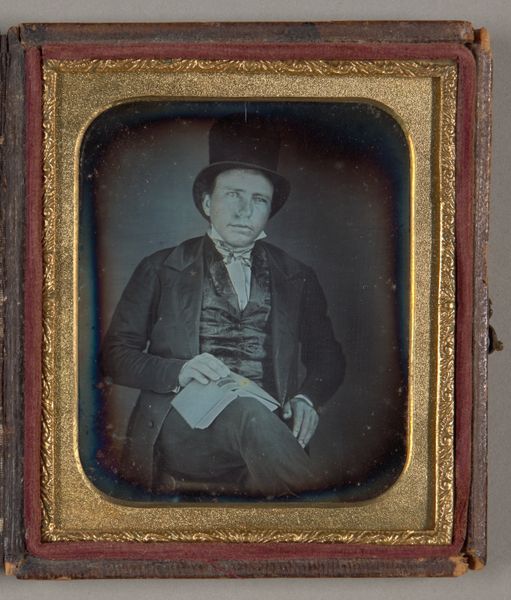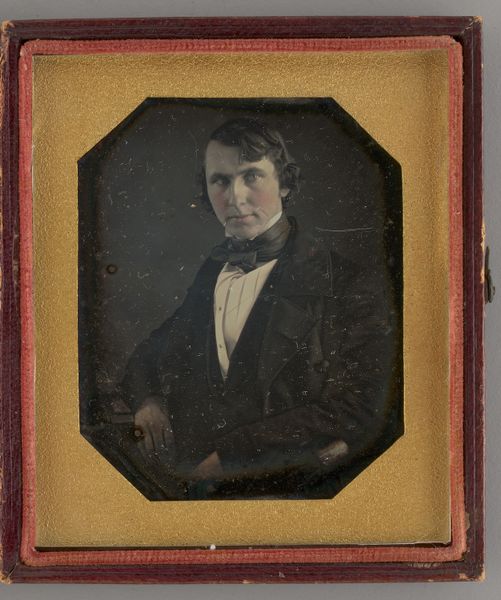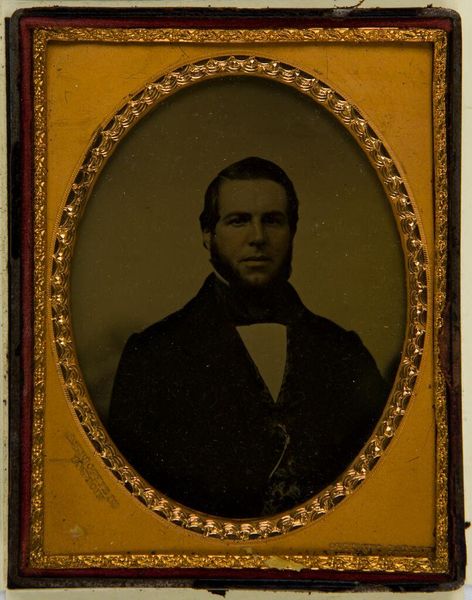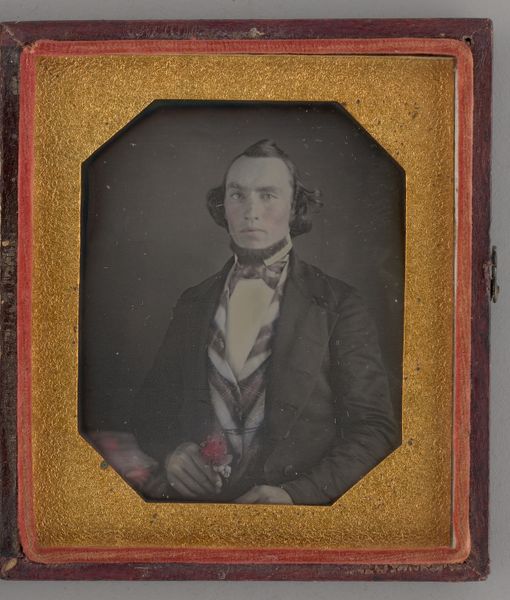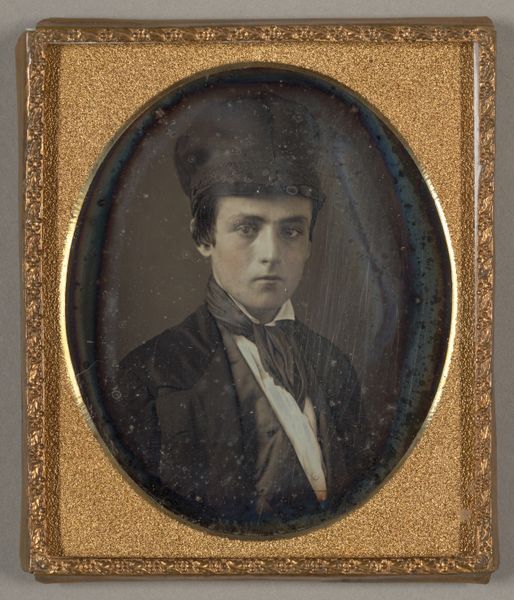
drawing, graphite
#
portrait
#
drawing
#
portrait
#
romanticism
#
monochrome photography
#
graphite
#
miniature
Dimensions: 3 1/16 x 2 3/8 in. (7.8 x 6 cm)
Copyright: Public Domain
Curator: Here we have Eliza Goodridge’s "Portrait of a Gentleman," dating from between 1826 and 1832. It's a miniature graphite drawing, currently housed in the Metropolitan Museum of Art. Editor: My first thought is that this feels like a memento carried through wars and over oceans—a distilled, precious personhood captured in monochrome. It gives the man in the picture a sense of thoughtful depth. Curator: It's fascinating how a simple portrait can encapsulate so much about an era. Notice the subject's high collar and the carefully knotted cravat. These sartorial choices spoke volumes about his status, aspirations, and engagement with contemporary fashion in the Romantic period. Editor: Exactly! And the fact that it's a miniature speaks volumes. It feels so intimate, like a secret whispered across generations. Did he carry this himself, maybe tucked in a pocket near his heart? Was it presented as a lover’s token? The close framing emphasizes this intimate connection. Curator: Absolutely. Miniatures in this period often served exactly that purpose—keepsakes representing connections, often circulated amongst families or loved ones. The artist has given him a steady and serene gaze, characteristic of how many sought to project themselves: upstanding members of society. His eyes invite us into a relationship and allow us a moment to witness an entire historical experience. Editor: I'm drawn to the detail captured with what appears to be only graphite. This speaks of tremendous control. It’s the kind of image that encourages narrative: where was he going, what did he care about? In the lack of information given about this nameless gentleman, we might imagine him in every field: lawyer, priest, scholar...or pirate, haha! Curator: Your interpretations are intriguing. The power of symbolic art lies precisely in that invitation—that endless range of narratives. Though his story remains mostly hidden to us now, viewing "Portrait of a Gentleman" certainly invites us to construct a compelling story. Editor: I love that. I am reminded that objects survive as emblems, not only testaments. They trigger responses and connections to the past—and ultimately reveal just as much about the present.
Comments
No comments
Be the first to comment and join the conversation on the ultimate creative platform.
